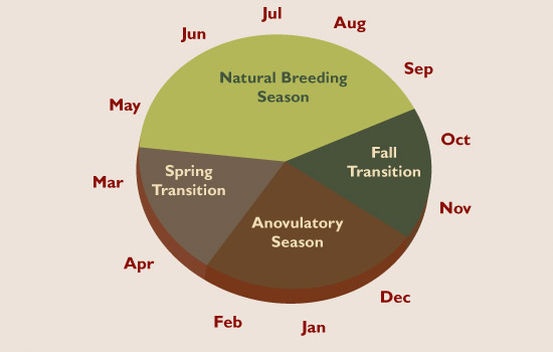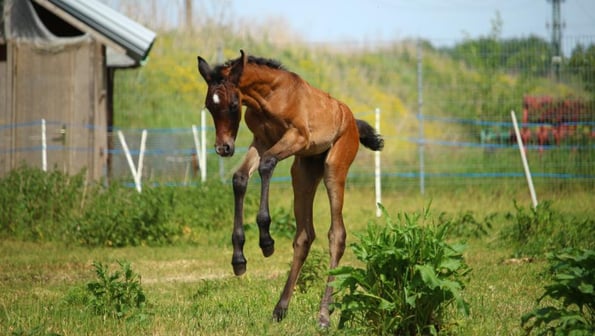Are you new to breeding? Or maybe you have struggled to get your mare in foal year after year?
Take a look at this quick tips below about several ways mare owners can adequately prepare their mares for the breeding season. Getting ahead of potential problems and developing a gameplan with your veterinarian will help mare owners stay proactive and ahead of the game.

1. Get your mare cycling
Place her under lights 60 days prior to when you plan to start. Some mares will need more time, some will need less. They need 14 and a half hours of daylight per day to stimulate them to cycle. You need to be able to read a newspaper in the darkest corner of their stall or lighted pen to make sure there is enough light. If you are unable to place your mare in a lighted stall or pen, the Equilume Mask is an option.
2. Go with Experience
Locate a facility with an experienced equine reproductive veterinarian to work with you and to develop the proper plan for your mare. Does she need cultured? Has she had trouble getting in foal in past years?
3. Logistics in Place
Make sure all stallion and/or embryo contracts are in place and all fees have been paid. This alleviates the frustration of not being able to order semen when your mare is ready to breed. Mares have been missed because of this, which further prolonged a pregnancy. Make sure you have contacted a shipper in advance, so you can advise them when the mare is ready to ship, or download Equo and request the trip when ready!
4. Scheduling Time Off for Embryo Transfers
On average, if everything goes 100% as planned, at least three weeks off a busy show schedule is needed for a show mare to give a successful flush of an embryo and the recipient mare having a positive first check. It’s very important that you plan your show schedule around your flushing scheduling for embryo transfers. Mares are usually not allowed to have a substantial workload after inseminating and before flushing.
5. End with a Clean Slate
It is essential for the vet to see the mare come back into heat after a flush and then do a uterine culture to make sure the mare does not have a uterine infection. Ending the breeding season with a reproductively healthy mare will put you ahead of the game at the beginning of the next breeding season.
Bonus
Early Foals: If you intend to race the foal, or shown in futurities, you will probably want your mare to foal early, in January or February, to allow for maximum growth during the year. To accomplish this goal, you would have to breed the mare in February or March.

Spring Foals: If you are not under pressure to have an early foal, then the late May to mid July period is probably the best. The foal will be born in mild weather, and grow substantially before winter rolls around again. By the end of their third year, foals born at this time will have caught up developmentally with those foaled earlier.
Late Foals: Breeding later than August gives rise to a host of other considerations. If you breed for a late foal, your mare will be carrying the foal through the warm summer months. She will be uncomfortable, and you will not be able to ride or drive her.




